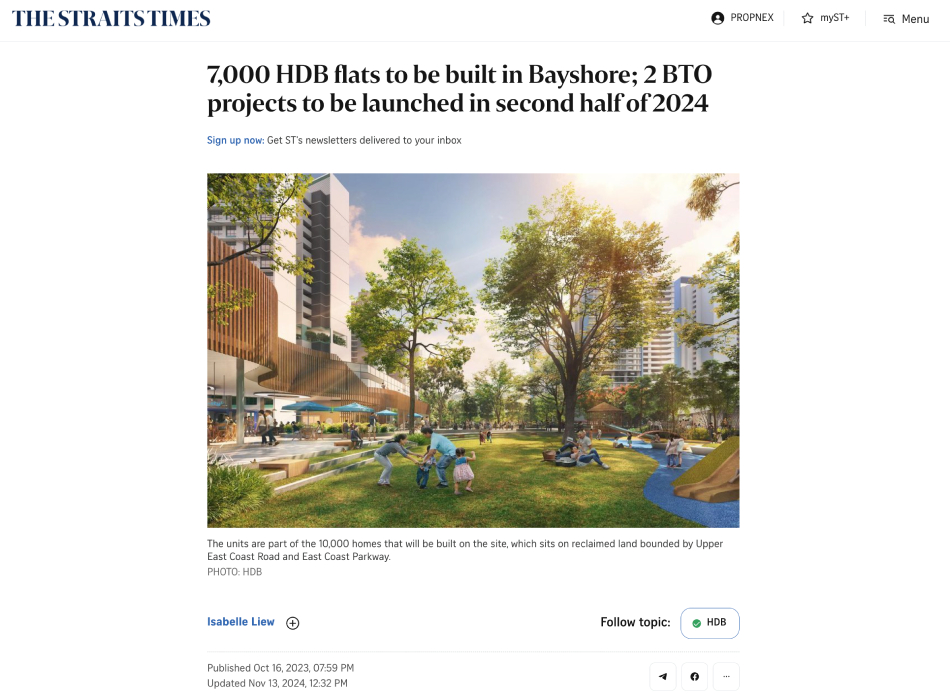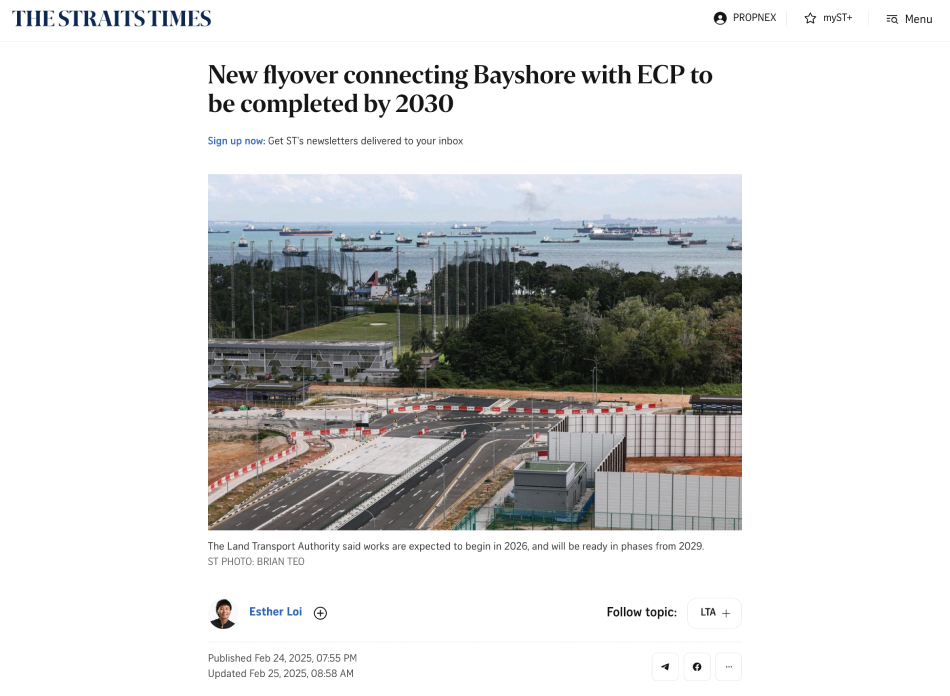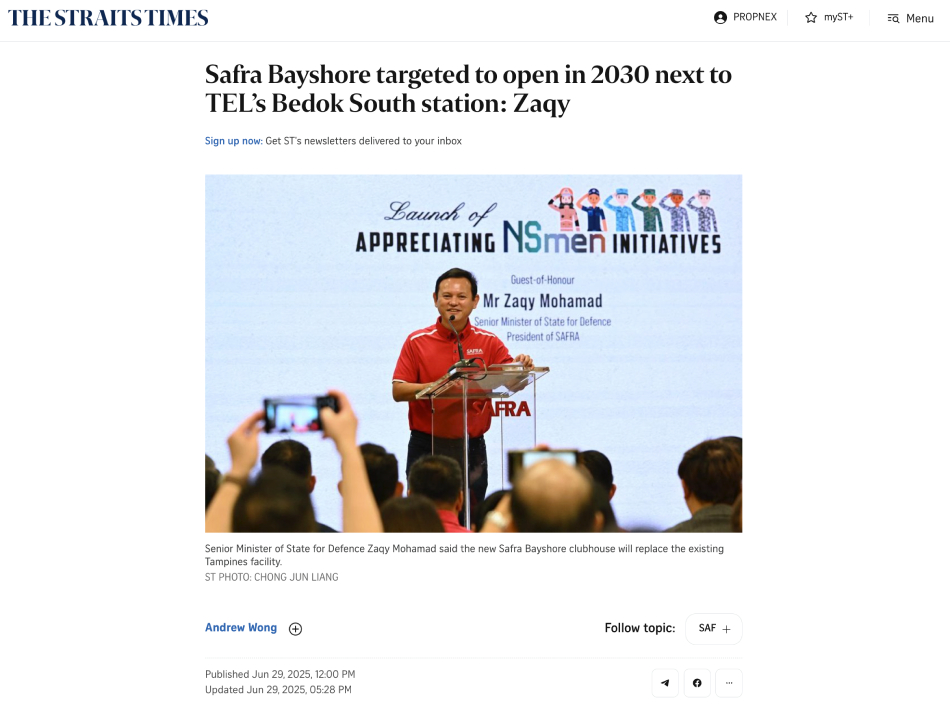PropNex Picks
|August 26,2025MRT Line Showdown: Which Route in SG Leads to Property Gold?
Share this article:
All aboard the property train!
Which MRT line is your ticket to property fortune? It's a question I wonder about in Singapore's fast-moving market. We all know that proximity to an MRT station can be a golden asset - but what if you could pick the right line to ride the wave of capital appreciation, rental demand, and future upside?
From old reliables to rising stars, we're placing Singapore's major MRT lines head-to-head in a cheeky but insightful (hopefully) face-off. Whether you're a savvy investor, an upgrader eyeing better value, or a first-time buyer hoping to future-proof your purchase, this guide is for you.
So, grab your ez-link card and let's find out: Which MRT line leads to property gold?
It's no secret that being near an MRT station makes any property instantly more attractive. Easy access means higher demand, which often translates into stronger price resilience over time. But the impact of MRT connectivity goes beyond convenience - it can be a powerful catalyst for transformation, breathing new life into ageing neighbourhoods and repositioning them as desirable hotspots.
Take Beauty World for example. Before the Downtown Line arrived, this Bukit Timah pocket was known for its old-school charm, quiet streets, and somewhat dated mix of shops and eateries. It was loved by long-time residents, but not exactly a magnet for new buyers or investors. All that began to change with the opening of the Beauty World MRT station in 2015. The new station drastically improved accessibility, shortening travel time to the CBD and other key districts As a result, foot traffic surged, sparking a revival in the area.

In the years since, we've seen modern developments like The Linq @ Beauty World and the upcoming integrated Bukit Timah Community Building take shape. Hip cafes and lifestyle businesses have moved in, giving the area a more vibrant, contemporary vibe. The URA Master Plan has further cemented this growth trajectory, with plans for better pedestrian networks and green spaces. Together, these changes have boosted both rental demand and property values, turning Beauty World into a highly sought-after location.
What's more, Singapore's ongoing MRT expansion plays a huge role in uncovering new growth areas before they boom. Upcoming lines like the Jurong Region Line (JRL) and Cross Island Line (CRL) are already generating buzz in places that were once considered "less accessible." For instance, the JRL is expected to enhance connectivity for the western region, especially in areas like Tengah, Jurong West, and Boon Lay - which could experience the same kind of estate revitalisation we saw in Beauty World.
For investors, areas near MRT lines like this present a rare opportunity: to ride the wave of appreciation while tapping into stable rental yields. And perhaps most excitingly, getting in early on new lines or extensions can position you ahead of the curve - before the market fully catches on.
In short: a well-located property near the right MRT line can turn into a goldmine - if you know where to look.
Now that we know just how powerful MRT connectivity can be in shaping property value, let's zoom in on the different train lines themselves. Each MRT line in Singapore has its own personality - from the heritage-filled East-West Line to the trendy and rapidly evolving Thomson-East Coast Line.
Some run through mature estates with dependable demand, while others cut through growth corridors where the next big thing is quietly brewing. So, whether you're hunting for long-term appreciation, steady rental yields, or an underrated gem that's about to shine - it's time to see how each line stacks up.
Thomson-East Coast Line (TEL): The New Kid with Big Dreams
The TEL is still expanding, but it's already catching the attention of savvy buyers - and for good reason. With stations running through estates like Marina Parade, Tanjong Rhu, Upper Thomson, and Orchard Boulevard, the line cuts through a blend of lifestyle, luxury, and growth zones. It connects the CBD, East Coast, and Northern Singapore, offering both prestige and practicality.
Areas like Katong Park and Marine Parade - once not directly served by MRT - are now gaining appeal with the TEL opening. These neighbourhoods boast strong heritage, excellent schools, and unique cafe culture, and the new connectivity has enhanced their liveability and investor interest. In the North, Lentor and Springleaf are witnessing fresh launches with promising take-up rates, while Woodlands North is tipped to become a major business node when the Johor Bahru-Singapore Rapid Transit System (RTS) opens.
The numbers speak for themselves. According to Investment Suite, condos within 200m of TEL stations have seen an average price of $3,019,464, with average psf of $1,751. Rental demand remains healthy, with condos averaging $4.07 psf and HDBs at $2.69 psf. Transaction volumes, though more concentrated due to the proximity filter, still reflect solid interest - with over 3,600 condo and 940 HDB sales recorded.
What's even more exciting is that several TEL stations are still under construction, with some newly completed and others on track to open in the next few years as part of the final stage of the line's rollout. Among them is Bayshore station - poised to become a highly attractive residential node. The enhanced connectivity will give residents direct access to the city centre while maintaining the charm of East Coast living.
This phased development means the line still holds latent upside - and those who enter early could benefit most from first-mover advantage. If you're the kind of buyer who plays the long game, TEL could be your golden ticket to capital growth and lifestyle convenience rolled into one.
East-West Line (EWL): The Seasoned Veteran
Spanning from Pasir Ris in the east to Tuas in the west, the EWL is the old faithful of MRT routes. It covers mature and well-loved estates such as Tampines, Clementi, Queenstown, and Jurong East. These areas already enjoy high accessibility and solid reputations, meaning resale value is generally strong and stable. Because many neighbourhoods along the EWL are already well-developed, the potential for explosive capital growth might be more limited - but what it offers is reliability, connectivity, and consistent demand.
Based on Investment Suite data, the average price of condos within 200m of EWL stations stands at $1,764,968, with an average PSF of $1,570. On the rental front, condos command about $4.52 psf, while HDBs achieve approximately $3.06 psf - slightly outperforming the TEL in average HDB rental value. HDBs near EWL stations also saw a strong average sale price of $682,548, with a notable concentration of activity close to key interchange nodes like Jurong East and Paya Lebar.
In terms of transaction volume, the EWL remains robust, with over 4,400 condo and 2,500 HDB sales logged for properties within 200m of its stations. These numbers highlight the EWL's broad appeal - whether it's families, upgraders, or renters looking for established connectivity and urban convenience. That's a testament to its accessibility and trust factor - and for risk-averse buyers, that kind of stability might just be the smartest play.
Downtown Line (DTL): The CBD Connector
Slicing through the central corridor, the DTL connects key business and residential nodes like Bugis, Newton, Sixth Avenue, and Beauty World. This makes it highly attractive to working professionals and expats who value seamless access to the city centre. Unsurprisingly, rental demand around these stations is strong, making the DTL a great pick for investors. That said, properties along this line don't come cheap - entry prices can be steep, especially for new developments near the CBD. If you can afford the entry point, the rental returns are worth considering.
According to Investment Suite, the average condo price within 200m of DTL stations is $1,964,018, with PSF averaging $1,598. On the rental front, condos command an average of $4.45 psf while HDBs come in at around $2.88 psf - slightly below the EWL but still strong given the central locations. HDBs in this zone average $475,091 in sale price, reflecting relatively accessible entry points for buyers looking to stay near the action.
In terms of volume, the DTL shows solid activity despite its more centralised focus, with nearly 2,850 condo sales and over 32,000 condo rentals. This high rental movement reflects its popularity among transient professionals and young couples working in the city. The DTL may not have the massive sprawl of the EWL, but it certainly punches above its weight when it comes to urban connectivity and rental performance.
Circle Line (CCL): The Convenience King
The CCL loops around some of Singapore's most vibrant and connected areas, including Paya Lebar, Serangoon, Buona Vista, and HarbourFront. Its circular nature means commuters can switch lines easily, enhancing overall connectivity. This built-in convenience tends to drive demand and, by extension, prices. With a good mix of HDBs and private housing options along the line, the CCL appeals to both investors and homebuyers alike. It's a well-balanced performer - not too speculative, not too mature - which makes it a reliable pick with consistent returns.
According to Investment Suite, condos within 200m of CCL stations average $1,796,440 in price, with psf averaging $1,633. HDBs nearby enjoy solid demand too, with average sale prices at $584,616 and rental rates average $3.08 psf. Condo rentals command about $4.96 psf, reflecting stable tenant interest. Transaction volume is impressive - with nearly 2,800 condo sales and over 27,000 condo rentals. The mix of high rental activity and relatively accessible prices makes the CCL a steady contender.
Source: SMRT Corporation
Even more promising is the full loop completion of the CCL by 2026, which will connect HarbourFront to Marina Bay via new stations such as Keppel, Cantonment, and Prince Edward. This not only closes the loop but also brings fresh potential to the southern and central fringes of the city. With this expansion, the line is expected to experience another surge in demand - especially near these new downtown-adjacent nodes. For buyers eyeing well-established convenience with more upside to come, the CCL checks all the right boxes.
North-South Line (NSL): The Old Reliable
The NSL is one of Singapore's original MRT lines, running from Marina South Pier to Kranji and Woodlands. It covers a good mix of core central and suburban areas such as Orchard, Novena, Bishan, and Yishun. While most of the neighbourhoods on this line are already established, that also means there's a dependable price floor. You're unlikely to see dramatic price spikes, but you're also not likely to experience huge dips. This makes the NSL great for home-stayers seeking long-term security rather than speculative growth.
According to Investment Suite, condos within 200m of NSL stations fetch an average price of $2,071,537 with psf averaging $1,656 - the highest average price among all MRT lines analysed. Rentals are also solid, with condo rents at an average of $4.75 psf and HDBs at $2.50 psf. While sales volumes are lower compared to some other lines (with 1,741 condo sales), the data reflects strong capital values and rental resilience in established estates. This reinforces the NSL's reputation as a dependable line, especially for those who prioritise legacy value and enduring demand.
North-East Line (NEL): The Underrated Performer
Covering Singapore's dynamic north-east, the NEL passes through Serangoon, Hougang, Sengkang, and Punggol. Once seen as more ulu, this region has been undergoing rapid transformation, particularly with the development of the Punggol Digital District. As more amenities and job centres pop up, the value of properties along this line is climbing. For upgraders and young families looking for a mix of affordability and future upside, NEL is definitely worth a closer look.
According to Investment Suite, condos within 200m of NEL stations average $1,405,953 in price, with a psf of $1,457 - making it one of the more affordable choices among the MRT lines. HDBs in the same zone show a healthy average sale price of $603,035 and rental rates of $2.81 psf. Condo rentals also perform well, average $3.46 psf. In terms of volume, NEL areas recorded over 2,650 condo sales and 21,700 condo rental transactions, with strong HDB movement as well - over 1,400 sales and 1,800 rentals. These figures highlight NEL's balanced appeal - combining strong demand, relatively lower entry prices, and rising growth potential.
After speeding through each MRT line, one thing is clear: the "best" line really depends on what you're looking for. Rather than rehashing what's already been said, let's zoom out.
The TEL is still maturing, but its upcoming stations and transformative plans - especially in areas like Bayshore and Lentor - signal long-term capital potential. The DTL and CCL are magnets for tenants, thanks to their strong city connections and lifestyle accessibility. Meanwhile, the NEL punches above its weight with affordable prices and a future-facing neighbourhood revival in places like Punggol. And of course, the evergreen EWL and NSL continue to offer reliable connectivity and trusted demand in Singapore's most established districts.
But here's the clincher - Singapore is compact and incredibly well-connected. Many neighbourhoods sit along not one, but multiple MRT lines. So, the smartest move isn't about picking one "winning" line - it's about identifying stations and corridors where liveability, transformation, and timing converge.
MRT line or not, it's always worth considering Singapore's broader transformation blueprint, from major transport upgrades to bold plans like future reclaimed estates that could redefine entire districts. These long-term shifts often unlock the strongest growth stories, shaping where tomorrow's opportunities will rise.
So, which line leads to property gold? It depends on where you board and when you alight. But if you ride with strategy, the returns might just be worth the journey.
Before jumping in, remember to zoom in beyond the MRT line itself. Pay attention to specific station surroundings, upcoming launches, and URA Master Plan developments. A great line may have overwhelming spots - and vice versa. If you're unsure where to begin, the experts at PropNex can help you chart the best route to property success.
Not all MRT lines are created equal - but with the right stop, you could be on track to property gold.









